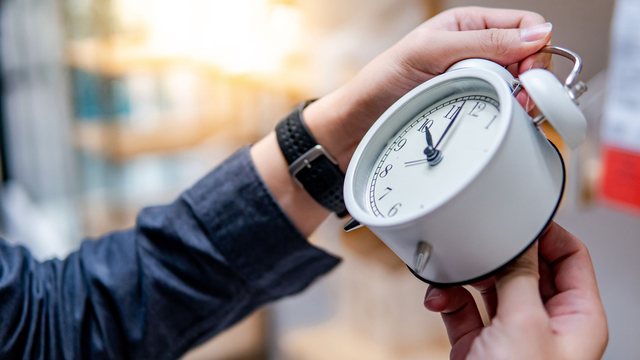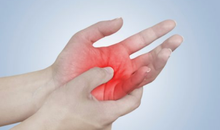
 Flash News
Flash News
Reconstruction scandal/ Berisha: They are enriching themselves with the misfortunes of others, wild political discrimination
Accident with 6 injured in Fier, police arrest 54-year-old and prosecute young man
Morning Post/ In 2 lines: What mattered yesterday in Albania
Saranda/ Man stabs wife
Two people arrested in Kakavija, attempted to cross the border with 60 packages of cannabis
The time change affects people a lot, here's what happens to physical and mental health

The time change greatly affects mental and physical health, especially for those who love to sleep in the morning, and for them the adjustment period can last for weeks.
Circadian rhythms regulate many physiological processes in plants, animals, and even bacteria, highlighting the extraordinary sensitivity of life to changes in environmental conditions.
Your internal biological clock is controlled by a small area of your brain called the hypothalamus. It regulates hormone release, body temperature, and metabolism. So if your circadian rhythm is out of whack, those things will be out of whack, too.
Most people need three to seven days to adjust to daylight saving time (DST).
Research suggests that diet also plays a role. People who eat high-fat diets seem to experience prolonged circadian misalignment after the spring time change.
A 2008 study of rodents found that those on high-fat diets adapted 20% slower to a six-hour change in light compared to those on low-fat diets. Scientists don't fully understand why diet and circadian rhythms are linked.
We know that exposure to light is also important for adapting to the time change.
One hypothesis suggests that a high-fat diet reduces circadian sensitivity to light.
Researchers have wondered whether the link between a high-fat diet and circadian sensitivity could be because late-night eating is linked to weight gain.
But a 2024 study found no significant differences in meal timing between diet groups, suggesting that it is the food itself, not the time it is eaten, that is the key factor.
Exposure to natural light is one of the most important factors in helping the body adjust to a new time. The more sunlight a person gets in the morning, the faster their circadian rhythm is reset.
Research suggests that adaptation is more difficult in spring than in autumn, with increased awakenings during sleep (10-30 minutes longer), greater sleep fragmentation (between 5-20%), and poorer sleep quality after the spring transition.
The spring time change appears to pose a slightly increased risk for those with life-threatening health conditions. Research has linked the daylight saving time (DST) transition to changes in mortality rates during the first eight weeks after the transition, particularly related to cardiovascular complications.
A 2024 study that analyzed 14 million deaths in the U.S. from 2015 to 2019 found a slight increase in all deaths after the spring transition, but a decrease in mortality after the fall transition.
The study also found an increasing trend in dementia-related mortality, with a 5% increase in deaths peaking in the fifth week after the spring transition. In addition, a slight increase in cancer-related mortality was observed in the first week after the start of DST.
Spring DST may seem like a simple one-hour shift, but for many, it's much more than that.
Latest news


Plagosi me bashkëshorten, arrestohet 55-vjeçari në Sarandë
2025-04-01 15:05:20
GJKKO postpones decision on Rexhë Byberi, caused over 277 million lek in damage
2025-04-01 14:57:07

North Macedonia Prime Minister's Bodyguard Arrested
2025-04-01 14:36:06
Lapaj sues SPAK for defamation against Agron Shehaj
2025-04-01 14:20:13




Summer depression/ What it is and how to recognize the symptoms
2025-04-01 13:32:46
Hoxha: The majority campaign will be financed by gambling
2025-04-01 13:21:58
May 11 elections, head of OSCE/ODIHR observation mission arrives in Tirana
2025-04-01 13:21:58
AKU finds 6 entities in Vlora that were trading chicken meat with salmonella
2025-04-01 13:02:38



Berisha mocks Rama: Today is his day, every time you hear it, remember April 1st
2025-04-01 12:16:57
The hearing for Nuredin Dumani at the GJKKO is postponed, the reason is revealed
2025-04-01 12:08:46



Salmonella scandal, former minister: Meat continues to be sold in markets
2025-04-01 11:23:52

Copying the program, Berisha mocks Rama with AI video
2025-04-01 10:50:17
What happens now with Marine Le Pen and her far-right party?
2025-04-01 10:31:49



Rama passes on to NATO leaders, holds $1.4 million in watches
2025-04-01 09:49:31
What information should you never share with ChatGPT?
2025-04-01 09:41:40
Rama proudly admits: Patronageists are a cell of the SP
2025-04-01 09:32:27
The DP accused him of copying the program, Rama: Is it like the Da Vinci Code?
2025-04-01 09:20:16
European Integration, a Decade in Almost Nowhere
2025-04-01 09:09:19


Today is April Fools' Day, here's what you need to know about April 1st
2025-04-01 08:39:07
HOROSCOPE/ Here's what the stars have predicted for each sign
2025-04-01 08:31:10
Weather forecast for today
2025-04-01 08:14:59
Morning Post/ In 2 lines: What mattered yesterday in Albania
2025-04-01 08:00:38
Berisha: LaCivita soon in Tirana, Rama will fall headfirst into the table
2025-03-31 22:54:43

Shkullaku: Rama's promises are like Shpirag's oil
2025-03-31 22:23:23

EU membership by 2030? Sulo: The prime minister's tale is populism
2025-03-31 21:45:36


"100 Villages" between lack of transparency and failure
2025-03-31 20:53:40


After Rama closed it, Albanians increased their time spent on TikTok
2025-03-31 20:17:47
Monday's confrontation, what will be discussed on the evening shows
2025-03-31 20:09:33


How to get nutrients when you're skipping important meals
2025-03-31 19:32:50

Saranda/ Man stabs wife
2025-03-31 19:02:30

Trump: TikTok shares will be sold to an American company before the weekend
2025-03-31 18:39:00





What is 'hidden' behind the numbness of the hands?
2025-03-31 17:22:27

Zhupa: Justice reform has been hijacked for political purposes
2025-03-31 17:04:22
Saranda Court acquits 17-year-old who stabbed his peer
2025-03-31 16:50:28


Parliament leaders from 17 European countries and the EU arrive in Ukraine
2025-03-31 16:18:56
Will the Veliaj uprising start tomorrow?
2025-03-31 16:14:38
Tragic explosion in a coal mine in Spain, 5 dead and several injured
2025-03-31 16:05:31
7-car accident on the Lushnje-Vlora road, 3 injured
2025-03-31 15:55:18
31-year-old man dies after coming into contact with electricity
2025-03-31 15:48:58

Measles, appeal for vaccination, 12 children affected in 3 months
2025-03-31 15:22:01

Are you too young for a mammogram? Here's what you need to know
2025-03-31 14:55:16
Marine Le Pen banned from running for French presidency in 2027
2025-03-31 14:47:54

The injustice of vetting is the injustice of justice.
2025-03-31 14:29:30
Cultural heritage, report: Recommendations from UNESCO fall on deaf ears
2025-03-31 14:21:23

Why do young people today feel more anxious than ever?
2025-03-31 14:08:25

Hit by Fier-Vlora freight train, 68-year-old ends up in hospital
2025-03-31 13:59:16

Albanian criminal drug gang dismantled in Catalonia, five in handcuffs
2025-03-31 13:31:55

BBC: Germany "throws" history behind it and prepares for war
2025-03-31 12:54:20



Davide Pecorelli, who faked his death, will be extradited to Albania
2025-03-31 12:08:22

Marine Le Pen found guilty of embezzlement of EU funds
2025-03-31 11:45:00
"It's an electoral machine," former vetting official praises Taulant Balla
2025-03-31 11:23:10

